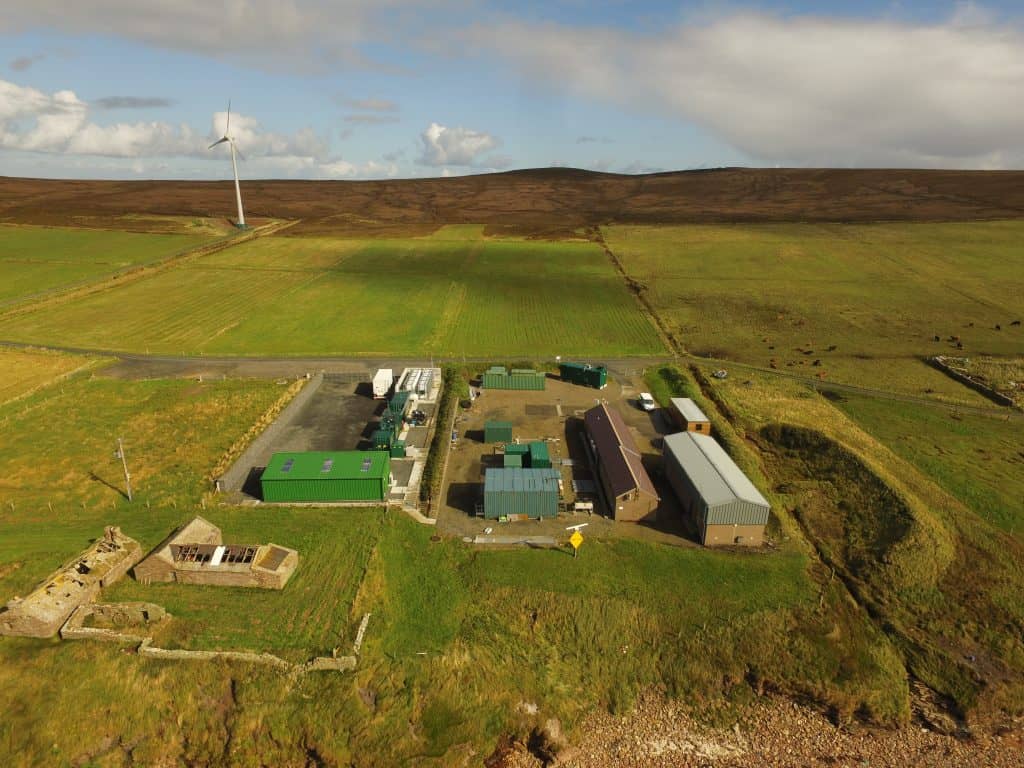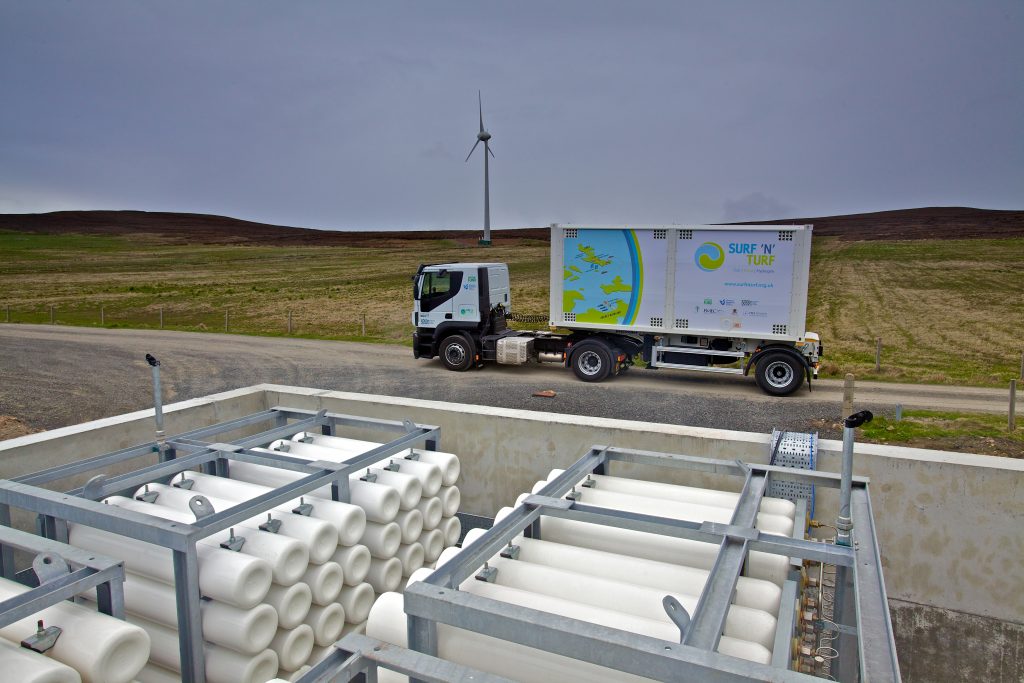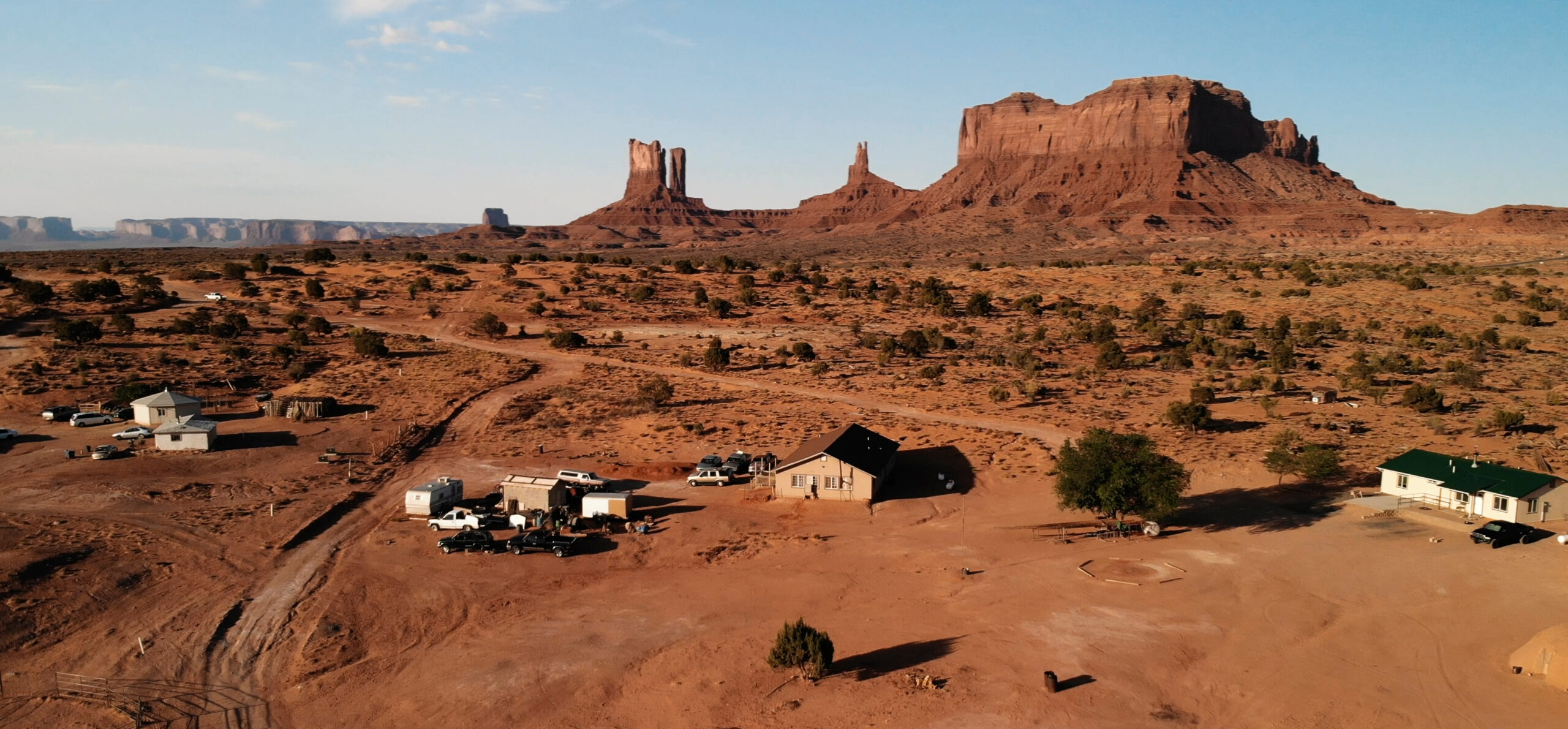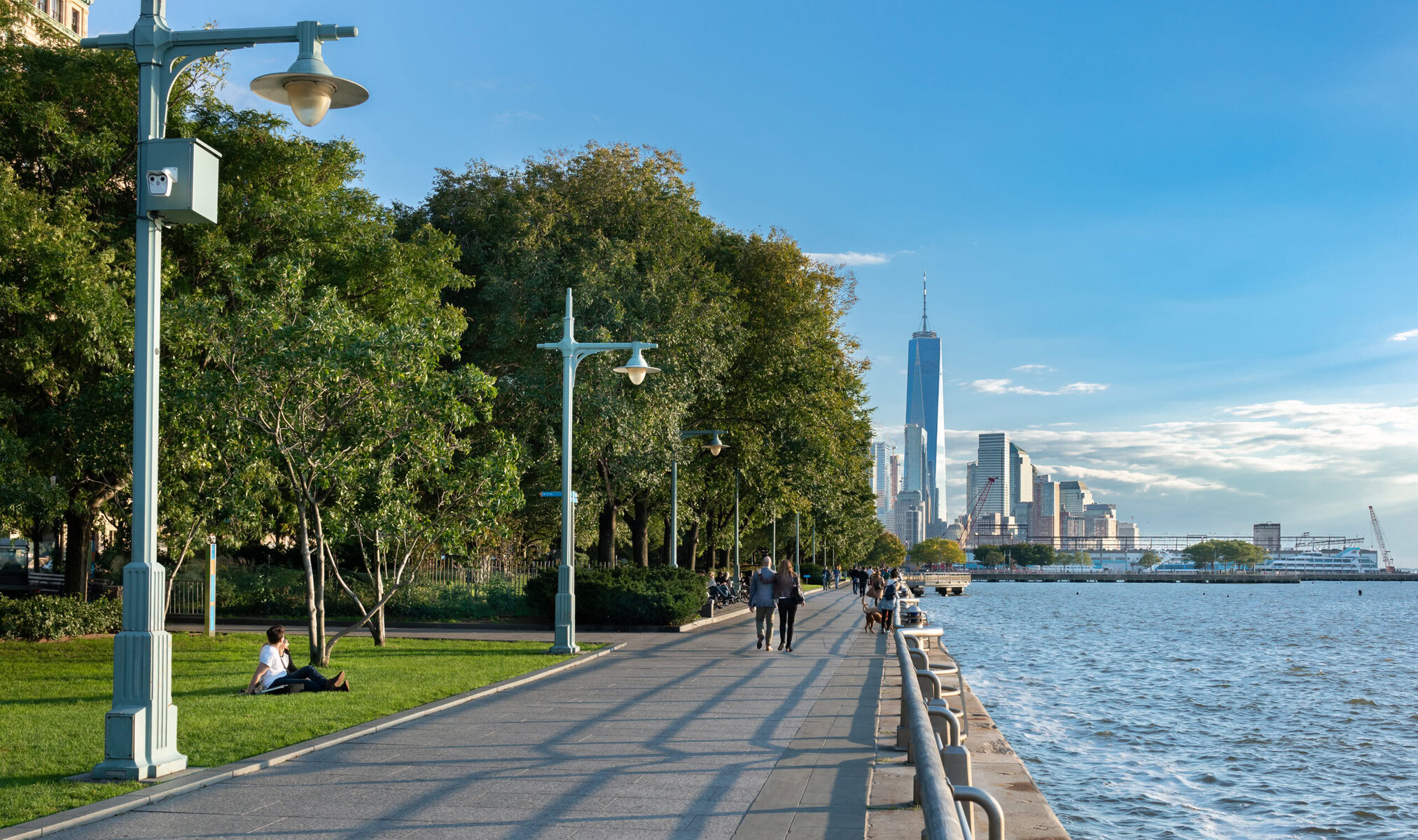Perched atop the United Kingdom, ten miles north of mainland Scotland, the Orkney Islands are a wild place. Encircled by roiling waters — the North Sea on one side, the Atlantic Ocean on the other — and battered by winds year round, the weather-lashed archipelago is bracing, beautiful and has in abundance that which others are scrambling to produce: renewable power.
Onshore wind turbines pepper the landscape, working in tandem with wave and tidal generators to supply Orkney’s 22,000 inhabitants with emissions-free energy. So prodigious is the islands’ green power that, since 2013, they have been meeting more than 100 percent of local demand, with the excess exported to the mainland via subsea cable.
It sounds like a neat solution, but technical restraints abound. The underwater connection isn’t large enough to handle the full extent of Orkney’s green output, forcing turbines and other clean sources to be powered down for fear of overloading the grid. For islanders, it’s a costly and frustrating situation, seeing their sustainable energy production routinely curtailed.

“That’s the thing with renewables: when the wind’s blowing and the waves are rolling in, you’ve got all this energy and nowhere to put it, so you simply need to power the generators down,” says David Hannon, the island council’s strategic development and infrastructure lead. “It’s something that’s been holding back our full green potential.”
The answer, Orcadians believe, is all around them: hydrogen.
For decades, the world has dreamed of a future powered by clean, limitless hydrogen energy. The most abundant element in the universe, it emits only pure water when burned. But hydrogen isn’t easy to acquire. Doing so requires huge volumes of electricity to break the bonds that bind it to other chemicals, canceling out its potential as a decarbonizing resource.
Unless, of course, you happen to have a surplus of green energy on hand — so much that it’s going to waste anyway, and could be channeled into pulling the “H” out of H2O.
The Orkney islands have two great electrolyzers that are powered by all that excess green energy. These machines split water into its elemental components, oxygen and hydrogen. The former is released harmlessly back into the atmosphere, while the latter is funneled into a tank, ready to be tapped as an energy source at a later date.
Crushed by negative news?
Sign up for the Reasons to be Cheerful newsletter.This is hydrogen’s great advantage: unlike the wind or the tides, it can be stored. When the wind is blowing hard and coastal waters are especially turbulent, Orkney’s “green hydrogen” tanks fill up, helping alleviate the need for curtailment. The containers are then transported around the islands for a variety of applications: heating a local school building; powering a wave and tide research facility; electrifying ships moored in the harbor at Kirkwall, the main town; charging the island’s plentiful electric vehicles; and fueling a number of retrofitted hydrogen-powered vans.
This is only the start. Work is underway on what will be one of the world’s first hydrogen-fueled seafaring ferries, dubbed HySeas III. Connecting Orkney’s residents, scattered across two dozen small islands, is a carbon-intensive business; the current diesel-powered passenger boats account for around one third of the islands’ carbon footprint. With HySeas III — and a new soon-to-be-tested short-haul hydrogen-powered airplane — that shouldn’t be the case for too much longer.
This sort of innovation has become the islands’ bread and butter in recent years. “We have a sort of informal motto: get metal wet,” says Caron Oag, hydrogen marketing officer at the Orkney-based European Marine Energy Centre (EMEC).
Since 2003, EMEC has been at the cutting edge of harnessing sea power to produce clean energy, offering testing facilities for wave and tidal energy devices. Fourteen years later, in a world first, it used tidal energy to power an electrolyzer, splitting water to make green hydrogen.
“It’s a really exciting time for us,” says Oag, who, like many young Orcadians, left the islands in early adulthood to study and work abroad.
“I wanted an outward-looking, international job, and I wasn’t sure Orkney could provide that. But the developments in renewable energy and hydrogen have created a cluster of innovative companies here which are attracting people to live and work on our islands and enabling Orcadians, like myself, to return home to skilled jobs.”
Creating green opportunities is key to the island’s hydrogen strategy, as authorities look beyond an oil and gas industry that has supported Orcadian families, including Oag’s, for decades.
To this end, EMEC is doing its bit. The center’s hydrogen team has grown in recent years, and is ramping up activity across its test sites. It recently installed a new, high-power tidal turbine known as the “Orbital O2,” built by Scottish developer Orbital Marine Power, with an upgraded electrolyzer soon to be operational. A consignment of vanadium flow cell batteries is expected in the near future too, which will enable the continuous production of hydrogen, not only at high and low tide.
Technology like this doesn’t come cheap. Happily, the Scottish government holds hydrogen in high regard, pouring millions of pounds into research and development programs. Last year, officials published the country’s hydrogen policy statement, a roadmap for Scotland to “become a leading hydrogen nation.”
For this to happen, a whole new set of skills and experience will have to be nurtured — something Orkney is also leading the way on.

“The know-how to produce hydrogen fuel, store it, move it around safely, that’s something Orcadians have gained thanks to the various projects being run,” says Nigel Holmes, leader of the Scottish Hydrogen and Fuel Cell Association. “Now, others around the world are looking to Orkney for practical answers to help develop their own zero-emission local energy systems using hydrogen and renewables.”
On the Spanish island of Majorca, the so-called Green Hysland project aims to create southern Europe’s first hub of hydrogen power, guided by lessons learned on the windswept Scottish isles. And then there’s the Dutch HEAVENN project, perhaps the world’s most ambitious hydrogen ecosystem scheme, aiming to replace the use of natural gas on a monumental scale. That, too, is drawing on Orcadian expertise.
As for the islands’ own future, feasibility studies are underway to extend the hydrogen infrastructure to more buildings, including domestic homes and the archipelago’s main airport. Research also continues on the storage and transport of hydrogen fuel, as commercial firms weigh up how best to ship the substance over longer distances — aboard giant tankers, or via a subsea pipeline.
With this work, further green hydrogen advances are hoped for in Orkney; an island on the edge of the Earth, at the forefront of the planet’s renewable energy revolution.






